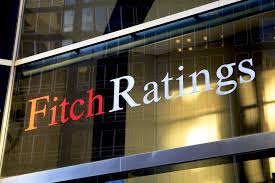Fitch Ratings highlights that Indian banks have bolstered their financial strength through improved asset quality, risk management, and capital buffers. Supported by Reserve Bank of India's reforms and liquidity measures, these banks are poised to enhance resilience amid evolving credit and economic challenges in FY26.
Fitch Ratings’ recent analyses underscore a positive trajectory for Indian banks, following significant improvements in core financial metrics over FY25 (ending March 2025). Strengthened underwriting standards, better loan diversification, and superior asset quality have driven upgrades in Viability Ratings (VRs) for several key lenders, signaling increased ability to withstand financial stress.
Critical to this outlook is the Reserve Bank of India’s (RBI) proposed reforms aimed at aligning credit risk assessment and provisioning practices with global norms. These regulatory changes, including adjustments to risk weightage and implementation of the Expected Credit Loss (ECL) framework with a transition period until 2027, are designed to enhance the prudential culture and ease capital pressures on banks.
Fitch’s reports note that despite cyclical pressures on earnings in FY26 due to tightening margins and credit costs, Indian banks are expected to maintain steady performance across key credit metrics. Improved monitoring, disciplined loan growth (10.6% in FY25 with forecasted rebound to 12–13% in FY26), and enhanced capital buffers (average CET1 ratio improved to 14.2%) are central to this resilience.
Notably, private-sector banks continue to record stronger capital positions and profitability compared to state-run counterparts, although the gap between the two has narrowed with state banks’ recent gains.
Key Highlights
Viability Rating Upgrades: Major banks including Punjab National Bank, Union Bank, Bank of India, Bank of Maharashtra, and ICICI Bank have received VR upgrades reflecting improved risk profiles and asset quality.
Regulatory Reforms: RBI’s upcoming changes on risk weight assignment and the phased introduction of the ECL provisioning framework aim to bring banks’ capital requirements in line with international standards, fostering financial stability.
Liquidity and Funding: RBI initiatives to maintain liquidity surpluses have lowered deposit pressure and supported lending, aiding transmission of policy rate cuts.
Loan Growth Trends: Sector loan growth is expected to rebound in FY26, supported by accommodative monetary policy, although lending remains cautious amid portfolio risks.
Capital Adequacy: Banks have strengthened capital buffers with the average CET1 ratio at 14.2%, underpinning loss absorption capabilities.
Earnings Outlook: Earnings may face cyclical challenges due to margin compression and credit cost pressures, requiring focus on operational efficiency.
Major Takeaway
Indian banks are on a path of increasing financial robustness, benefiting from improved asset quality, prudent risk management, and supportive regulatory reforms. Continued vigilance, strong capital discipline, and adaptation to evolving RBI frameworks will be critical to sustaining resilience and enabling growth amid economic uncertainties.
Sources: Reserve Bank of India Proposals (October 2025), The Hindu BusinessLine, Reuters.
